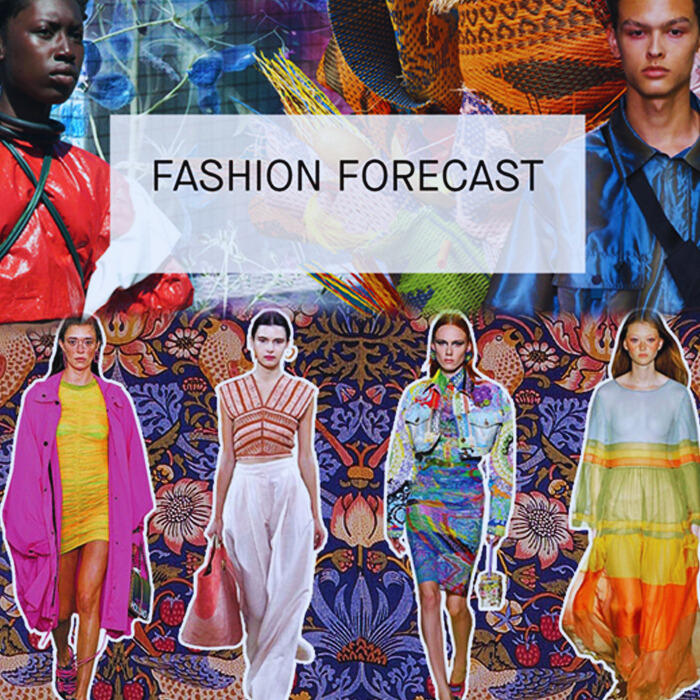In the fast-paced world of fashion, staying ahead of the curve is crucial for designers, retailers, and fashion enthusiasts alike. Forecasting fashion trends accurately can mean the difference between leading the industry and falling behind. At the core of this process lies a blend of art, data analysis, and intuition. In this guide, we explore forecasting fashion trends in depth. It equips you with insights to navigate the fashion industry effectively.
Understanding the Dynamics of Fashion Trends
Fashion trends are not merely fleeting fads; they reflect societal shifts, cultural influences, and consumer preferences. To forecast trends effectively, it’s essential to grasp the underlying dynamics driving these changes. Fashion trends come from runway shows, fashion weeks, street style, and social media, making forecasting both challenging and exciting.
Leveraging Data Analytics in Trend Forecasting
In today’s digital age, data analytics plays a pivotal role in predicting fashion trends. Using big data, fashion analysts can identify patterns, track consumer behavior, and predict trends accurately. Data-driven insights from online search queries, social media engagement, sales data, and market trends guide fashion forecasting.
The Role of Trend Forecasting Agencies
Trend forecasting agencies serve as indispensable resources for industry professionals seeking reliable insights into future fashion trends. Agencies analyze market data, research trends, and collaborate with fashion insiders to identify emerging styles and themes. Fashion brands benefit from trend forecasting services, which provide invaluable forecasts, reports, and tailored recommendations.
Embracing Sustainability and Ethical Practices
In recent years, sustainability and ethical practices have become increasingly prominent in the fashion industry. Consumers want brands to adopt sustainable and ethical practices in their supply chains due to growing environmental and social awareness. Forecasters highlight eco-friendly materials, ethical production methods, and circular fashion initiatives that resonate with changing consumer values.
Navigating Cultural Influences and Globalization
In an interconnected world, cultural influences and globalization play a significant role in shaping fashion trends. The fusion of diverse cultural elements drives innovation and creativity in the fashion industry, from urban streetwear trends to traditional craftsmanship gaining global recognition. Trend forecasters must navigate this multicultural landscape adeptly, recognizing the significance of cultural authenticity and diversity in trend forecasting.
The Impact of Technology on Fashion Forecasting
Advancements in technology have revolutionized the way fashion trends are forecasted and disseminated.
Technology, including AI trend analysis tools and virtual fashion show platforms, aids fashion professionals in staying agile and responsive in an ever-changing industry. By embracing digital innovation, trend forecasters can use real-time data and immersive experiences to anticipate and adapt to changing consumer preferences seamlessly.
FAQs about Fashion Trend Forecasting
1. What is fashion trend forecasting, and why is it important?
Fashion trend forecasting predicts future clothing, accessories, and style trends based on consumer behavior, cultural influences, and market analysis. It is essential for fashion professionals, including designers, retailers, and marketers, as it enables them to stay ahead of the curve and anticipate the evolving needs and preferences of consumers. By accurately forecasting trends, businesses can make informed decisions about product development, marketing strategies, and inventory management, ultimately maximizing their competitiveness and profitability in the industry.
2. How do trend forecasting agencies predict fashion trends?
Trend forecasting agencies utilize a combination of research methods, data analysis, and industry expertise to predict fashion trends accurately. These agencies monitor a wide range of sources, including fashion shows, street style, social media, and market trends, to identify emerging styles and themes. They also collaborate with fashion insiders, conduct consumer surveys, and analyze sales data to gain insights into shifting consumer preferences. By synthesizing this information, trend forecasting agencies produce trend reports, forecasts, and strategic recommendations that help businesses anticipate and capitalize on upcoming trends.
3. What role does technology play in fashion trend forecasting?
Technology has transformed the fashion industry and revolutionized the way trends are forecasted and disseminated. Advancements in artificial intelligence, data analytics, and virtual reality have enabled fashion professionals to access real-time data, predictive algorithms, and immersive experiences that enhance the accuracy and efficiency of trend forecasting. From AI-powered trend analysis tools to virtual fashion show platforms, technology offers innovative solutions for tracking trends, predicting consumer behavior, and adapting to changing market dynamics. By embracing digital innovation, fashion professionals can stay agile and responsive in a rapidly evolving industry landscape.
4. How can businesses leverage fashion trend forecasting to drive success?
Businesses can leverage fashion trend forecasting to gain a competitive edge and drive success in the industry. By staying ahead of emerging trends, brands can develop products that resonate with consumers, differentiate themselves from competitors, and capture market share. Trend forecasting also informs strategic decisions about marketing campaigns, retail merchandising, and brand positioning, enabling businesses to align their offerings with evolving consumer preferences effectively. Additionally, by embracing sustainability and ethical practices highlighted in trend forecasts, brands can demonstrate their commitment to social responsibility and appeal to conscientious consumers, further enhancing their brand image and loyalty.
Conclusion: Mastering the Art of Fashion Forecasting
Forecasting fashion trends is both an art and a science, requiring a keen eye for aesthetics, a deep understanding of consumer behavior, and a willingness to embrace innovation. By leveraging data analytics, collaborating with trend forecasting agencies, and embracing sustainability and technology, fashion professionals can position themselves at the forefront of the industry. With foresight and creativity, the possibilities for forecasting fashion trends are limitless, offering endless opportunities for innovation and expression.

